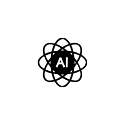
AI in Medical Imaging & Diagnostics: The Future of Early Detection
Artificial intelligence (AI) is redefining the way medical professionals diagnose diseases. One of the most groundbreaking applications? AI in medical imaging and diagnostics.
From analyzing X-rays to detecting life-threatening conditions in seconds, AI is helping doctors spot what humans might miss — faster, more accurately, and with fewer errors.
🔬 What Is AI in Medical Imaging?
AI in medical imaging uses machine learning, deep learning, and computer vision algorithms to examine medical images such as:
- X-rays
- CT scans
- MRIs
- Ultrasounds
- PET scans
These systems are trained on thousands (or even millions) of real medical images to learn how to identify abnormalities, patterns, and early signs of disease.
🧠 Top AI Tools Transforming Medical Imaging
1. IBM Watson Health Imaging
- Uses AI to identify cancer, cardiovascular conditions, and more.
- Can detect diseases earlier than the human eye.
- Integrates directly with hospital radiology systems.
2. Aidoc
- Real-time triage for CT scans.
- Detects critical conditions such as brain hemorrhages, pulmonary embolisms, and strokes.
- Improves workflow by alerting radiologists immediately.
3. Zebra Medical Vision
- Provides over 50 AI algorithms for radiology.
- Covers a wide range of conditions, including breast cancer, fatty liver, and emphysema.
- Designed to work seamlessly with existing PACS systems.
4. Google DeepMind Health
- AI that analyzes eye scans to detect over 50 eye diseases with accuracy comparable to top ophthalmologists.
- Also works on breast cancer detection from mammograms.
- Continuously learning and evolving through real-world data.
⚙️ How It Works: A Simple Breakdown
- Image Upload – The system receives an image (e.g., chest X-ray).
- Analysis Begins – AI algorithms scan for abnormalities based on learned data.
- Classification & Highlighting – Conditions are flagged and localized on the image.
- Report Generation – The AI provides a summary and likelihood of diagnosis.
- Doctor Review – Clinicians make final decisions, using AI suggestions as guidance.
🚀 Benefits of AI in Medical Imaging
✅ Speed:
AI can process and flag abnormalities in seconds, reducing waiting times for patients.
✅ Accuracy:
AI models are trained on massive datasets, reducing diagnostic errors due to fatigue or oversight.
✅ Early Detection:
AI identifies patterns that may be invisible to the human eye — crucial for diseases like cancer.
✅ Scalability:
Hospitals and clinics with staff shortages can use AI as a second reader to maintain diagnostic quality.
✅ Cost Reduction:
Faster, more accurate diagnoses mean fewer repeat tests, fewer misdiagnoses, and lower treatment costs in the long term.
🏥 Real-World Impact
- Mount Sinai Hospital (New York): Reduced lung cancer diagnostic errors by 20% using AI-based image analysis.
- NHS (UK): Partnered with DeepMind to cut down delays in diagnosing eye diseases.
- Sheba Medical Center (Israel): Uses Aidoc to prioritize emergency CT scans, saving lives in stroke cases.
🔐 Challenges & Ethical Concerns
While AI in medical imaging is transformative, there are some challenges:
- Data privacy and HIPAA compliance
- Bias in datasets (e.g., underrepresentation of certain populations)
- Regulatory approval by health authorities (FDA, CE)
- Dependence on technology without human oversight
That’s why AI is used as a diagnostic assistant, not a replacement for medical professionals.
🔮 The Future of AI in Imaging
As AI models continue to evolve, we’ll see:
- Real-time diagnostics integrated into wearable devices
- Predictive imaging for disease prevention
- Cross-specialty analysis combining imaging + genomics + clinical records
AI won’t just analyze images — it will predict and prevent diseases before symptoms appear.
📌 Conclusion
AI in medical imaging and diagnostics is not science fiction — it’s saving lives right now. With tools like IBM Watson, Aidoc, and DeepMind, healthcare providers are diagnosing faster, treating earlier, and improving outcomes across the board.
If you’re in healthcare, radiology, or medical tech, now is the time to explore how AI can elevate your service delivery and patient care.
